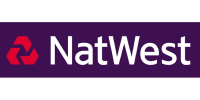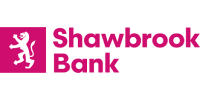Bridging loans

What is a Bridging Loan?
A bridging loan is a short-term financing option that helps borrowers bridge the gap between buying a new property and selling an existing one. It provides quick access to funds when time is crucial, especially during sale delays.
Bridging Loans are commonly used for:
- Bridging the gap between buying and selling properties
- Temporary financing for investment maturation
- Funding urgent projects
- Quick access to capital
Bridging Loan Example
Bridging Loan for Purchasing a New Property (Chain Break Bridge):
Tom has successfully exchanged contracts with the seller of his new property, but his purchaser’s solicitor requires additional time to fulfil a mortgage condition. As the agreed-upon completion date for purchasing the vendor’s property is rapidly approaching, Tom finds himself in an urgent situation. To fulfil his obligation to buy the new property while his current home is still on the market, Tom requires a bridging loan. The loan will be promptly repaid once his existing property is sold, resolving the temporary financial gap in the process.
Bridging Loan for Renovation (Renovation Bridge):
In the process of renovating a buy-to-let property, Joanne finds herself in need of additional funds to cover the renovation costs. To address this financial requirement, she decides to apply for a bridging loan.
Once the renovation work is completed, Joanne plans to repay the loan either by selling the property or by remortgaging it, ensuring a smooth resolution of her financial obligations.
Faster House Purchase (Auction Bridge):
After successfully purchasing a property at an auction, John faces the urgency of obtaining rapid financing. Traditional lenders are unable to process a mortgage within the necessary timeframe, leading him to choose a bridging loan as an alternative solution. Following the purchase, John plans to secure a long-term lender, allowing him to repay the bridging loan effectively and achieve a seamless financial transition
Investor Cash Buyer (Drawdown Bridge):
Dawn aims to swiftly acquire investment properties but requires additional available cash. To address this, she establishes a pre-approved drawdown bridge, utilising the equity in her current properties. This enables her to promptly secure new properties without the delays associated with a traditional mortgage. Subsequently, Dawn can remortgage the acquired property, using the funds to repay the bridge loan, thereby preparing herself for future property purchases


Types of Bridging Loans
Bridging loans are short-term loans used to buy a property before selling or refinancing another one. They can be of two types: open or closed.
A. Open bridging loans
Open bridging loans: For buyers who need flexibility and speed. They can repay the loan when they want, but they pay higher interest rates and secure the loan with the property.
A. Closed bridging loans
Closed bridging loans: For buyers who have a fixed repayment date. They pay lower interest rates, but they need to provide proof of how they will repay the loan.
Mortgage Advice..
Thinking of getting a mortgage? Our experienced team of skilled mortgage advisers are here to offer the essential guidance you require. Relying on our comprehensive understanding of the mortgage market, we’ll ensure you secure the perfect mortgage to suit your specific situation.

Final thought
Our team of qualified mortgage advisers are available to address any inquiries you may have about bridging loans. We are here to assist you in making the most informed decision for your financial future. Why not contact us today to see how we may assist you?
FAQs: Bridging Loan
Most frequent questions and answers about bridging loan
A bridging loan typically costs between 0.5% to 1.5% per month. Although the market has become quite competitive and, depending on the LTV, starts as low as 0.4% per month.
Other costs include valuation and legal fees. The lender will also charge an arrangement fee, typically 2% of the loan amount, which may be added to the loan or taken as a one-off payment.
Bridge loans are quicker than traditional mortgages. Many bridge lenders offer very quick turnaround times, so it is possible to complete a loan in 1-2 weeks. However, because there is still a legal transaction to be completed, typically, the process will take 4-6 weeks.
A bridging loan is a great solution for short-term financial needs or to bridge cash flow gaps. However, it is important to fully understand the costs of the loan before committing to it.
Bridging loans can appear to be expensive due to higher interest rates and arrangement fees associated with them. However, the cost becomes relative when compared with the missed opportunity if a bridging loan was not used. It is important to understand all costs before taking out a bridge loan.
Anyone who owns a property and needs short-term financing can apply for a bridging loan. The loan and interest rate will be dependent on your financial circumstances and the property.
Some bridges are regulated by the Financial Conduct Authority (FCA) but only where they are secured on your own home, and the funds are not used for business purposes. Buy-to-let and commercial bridging loans are generally not regulated.
The amount that you can borrow through a bridging loan will depend on the value of your property and its current market value. Generally, you can borrow up to 75% of the market value of your property. You can achieve up to 100% bridging loan with additional property security.
Construction projects: They can fund construction projects, including new builds and land purchases with or without planning permission.
Expansions or renovations: Bridging loans can be used to extend, convert, or renovate any type of property.
Investments: They provide funding for investment projects involving properties that will be sold for profit.
Bridge the gap: They serve as a chain-breaking option, allowing the purchase of a new property while waiting for another to sell.
Unexpected expenses: Bridging loans can cover unexpected costs, like medical bills, tax bills, or urgent home repairs, provided there is a repayment plan within 12 months.
Applying for a bridging loan is relatively straightforward, and a good specialist mortgage adviser will handle the process for you. However, before you apply, you can prepare your information to speed up the process.
To start applying for a bridging loan, gather all the necessary paperwork and documents. These might include bank statements, proof of income, tax returns, financial statements, and other evidence pertinent to your loan application.
A bridge lender will want to understand your financial position, but they will also place a great deal of importance on how you will pay the loan back before the end of the term. This is called the bridge exit route.
There are two main ways to exit a bridge. One is to sell the property. The other is to refinance the property onto a longer-term loan.
If you plan to sell the property or another related property to repay the bridge loan, the lender will assess the feasibility of this. For example, how long will it take to sell, anything you need to do to the property to make it sell, local demand etc.
If you plan to refinance the bridge loan onto a longer-term loan, again, the lender will check the feasibility, such as do your finances meet the lender’s criteria. They may ask you for confirmation from your adviser or refinance lender that you have an initial decision in principle from a lender to confirm this.
One risk is that markets or circumstances can change, and the plans for exiting the loan may no longer work. If you do not exit a bridge loan within the bridge loan term taken, there are usually substantial penalties.
Our advisers will help you to think through several exit routes to minimise this risk. They will also recommend reputable bridge loan funders that they can help you to negotiate an extension with should your plans take longer than expected.
Our Lenders:









